Was boiling oil used in sieges?
Though we have seen it in a myriad of Hollywood films… The defending troops await the enemy at the castle. And when they arrive, the soldiers in the stronghold open the secret trap doors above the big iron gate and pour hot oil on their adversaries.
So, I set out to discover if it really was a realistic description of medieval warfare, the hot oil thingy… Was boiling oil used in sieges back then, in the middle ages?
Throwing things at the enemy from the security of the inside of the castle was a very common medieval defense strategy. The strong walls were difficult to break for the attacker and if they tried, they had to expose themselves to enemy fire. But to use burning oil was expensive, and in most places, they just didn’t have enough. Reports of hot sand and boiling water are far more common.
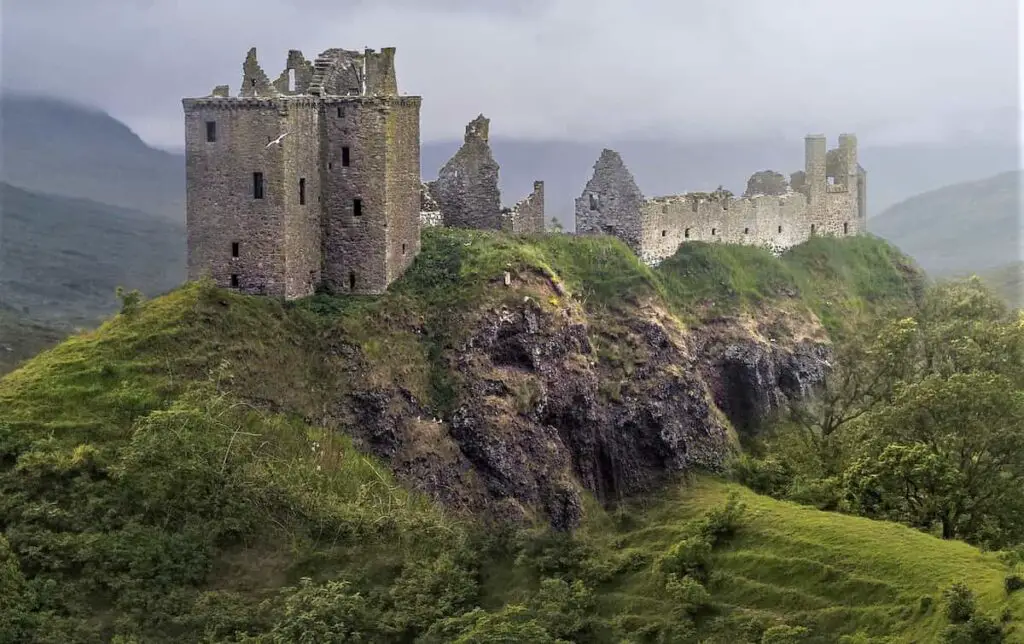
How did a siege work in medieval and ancient times?
First of all, we’re talking about a very long period. Things started changing in the 16th and 17th centuries when firearms became widely available. So, practically from when we first started building fortifications up until that time, we have situations with defenders inside some sort of wall and attackers outside trying to break in.
Secondly, during this very long time, many ingenious weapons, structures, catapults, and methods were invented to be able to force the defenses. And all these methods were always heavily depending on the immediate geographical situation, the state of the attacking soldiers… As well as the defending soldiers, the supplies available, the time of year, the climate, and a whole lot of other factors. In short, no siege was the same as the other.
Wars, before guns, were fought with swords, pikes, bows, and lances. And if the enemy had taken refuge inside a castle with thick stone walls, these weapons were of little use. In fact, to break a castle defense you needed more than that.
Fortunately, for the attacker that is, such solutions existed.
Siege weapons
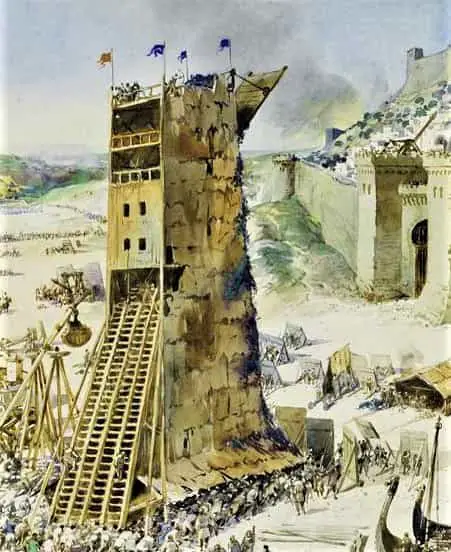
Ladders.
This was the simplest, most straightforward method to conquer a stronghold. It was also the most expensive in cost of lives. To raise ladders against the castle wall you would need a massive attack force, and death-defying soldiers. Because you give the defenders every possibility to shoot arrows, throw things, or simply push the ladders away from the wall.
Siege towers
These were huge wooden structures that did the same job as a ladder but at the same time protecting the soldiers while they got up and over the wall. If you got a siege tower close to the castle, it could send an attacking force big enough to clear that section of the wall and create a safe passage for more to enter. The best defense against siege towers was to try to burn them with fire… And they couldn’t be used if the terrain wasn’t reasonably flat and solid… Or if there was a moat.
Trebuchet.
These were a type of catapults that used manpower, later counterweights, to launch big projectiles against or inside the castle wall. They were very effective in certain situations, but less so if the castle was higher than the surrounding terrain. They also needed to be very big if they were to do any significant damage to the wall. Another issue was that a tore down wall still left a large amount of rubble in the way of the attacker. There are examples where a castle resisted for months after the wall had been breached. One other thing, trebuchets and other forms of catapults could be used by the defenders as well.
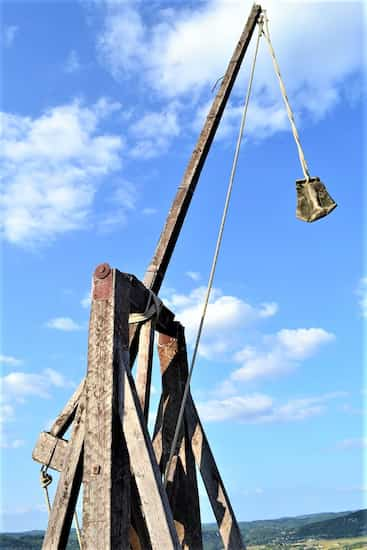
Sapping.
Sapping in warfare means digging under the wall, and under or close to the foundation so that the whole structure collapses. It was a very effective, easy, and economic way to bring down a significant part of the wall. The problem evidently was that it was slow.
The different situations inside and outside the castle.
A standoff like those in a siege created very different conditions for those inside the castle compared to those outside. For both sides, time was crucial.
The attackers had access to the surroundings and could have food and supplies sent to them. But if they were in enemy land, the supply chain could be slow. And they always risked being attacked in the back by the defender’s reinforcements or their allies.
- During the siege by the Spartans of the city of Platea in 429-428 BC., the attacking Spartans first built a wall all around the city to prevent anybody from escaping or attacking from the city. Then they built another wall on the outside of their camp as a defense against any reinforcement from the Athenians. The sieging forces lived inside this corridor for several months before the city finally surrendered after 212 men successfully had breached the two defense palisades and fled.
A big problem for the defenders could be the lack of food or even worse, the lack of water. And the fact that they were cut off, without the possibility to send scouts and messengers to friends and allies… Unless they had some secret opening or tunnel.
- The St. Patrick’s Well in Orvieto, Italy, was dug in the 16th century to ensure water supply to the city in case of a siege. Orvieto is a rock rising some 200 feet off the surrounding terrain. The distance from the city to the groundwater level was too great, so a big cylindric hole was dug with a double, spiral road on the side… One for going down and the other for going up. The depth is 175feet (53 mt), and the diameter at the base is 43 feet (13mt).
More issues…
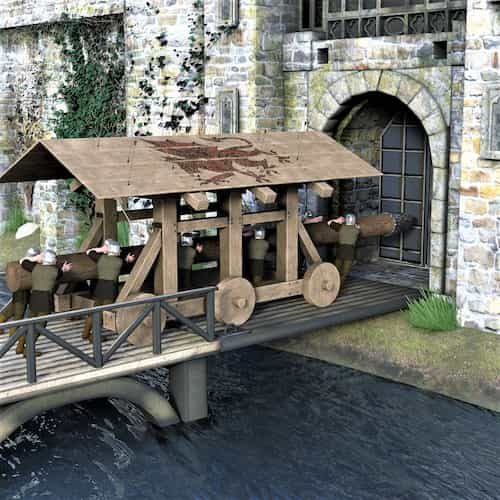
Both parts risked quarreling, and desertion among the soldiers. For the defenders, the civilians too could create problems.
The biggest danger still was diseases. If the siege continued for months or even years, having men in closed encampments, as well as the closed spaces inside the castle, could be extremely hazardous. Especially since knowledge about germs, and viruses was close to inexistent. In human history, diseases were always much more fatal than war and starvation ever were.
There was dialogue even in medieval warfare.
During the siege, there were normally also continuing discussions and negotiations between the parties. These depended very much on how the war developed. If the attackers had trebuchets, and siege towers, they would have a much stronger position in those negotiations. The same for the defenders. If they had food, they would be less eager to sign any peace treaties.
It is reasonable to conclude that any warlord would rather force a surrender than losing lives in battles along the castle walls.
There are many examples of defeated armies being treated fairly because they surrendered and thus avoided further bloodshed. And there are many examples of defeated soldiers being lined up and killed just for opposing too fierce resistance…
But there are also examples of the opposite:
- Lady Bankes defended Corfe Castle, Dorset, England, against 500 soldiers in the mid-1600. For three years with practically only a handful of servants, she resisted the siege of the Roundheads. In the end, she had to give up the castle as she was betrayed by one of her men. The castle was demolished, but Lady Banks suffered no penalty. Her heroic resistance had made such a strong impression on her adversaries, that they wouldn’t bring any repression on her.
Forcing the main gate.
If you couldn’t breach the walls, another way to get in was to force the main gate. For this, you would need a ram, and rams could be a simple tree log cut down from one of the nearby trees. Or it could be an ingenious construction with levers and wheels and stuff. However it was made, you still had to get close to the gate. And that could prove deadly.
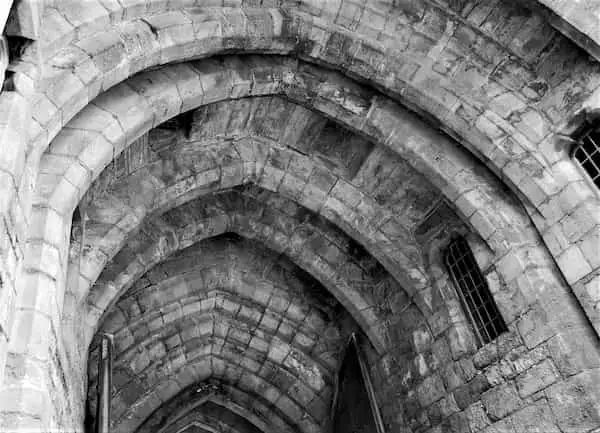
The Caernarfon Castle in Caernarfon, Wales, UK has two main gates, the King’s gate, and the Queen’s gate. The King’s gate was never completed, but if it would have been, a visitor would have crossed two drawbridges, passed through five doors and six gates, portcullis, a right-angle turn before an enclosure from where you entered the courtyard. This whole route was overlooked by numerous murder holes and arrowslits. The latter is a vertical slit in the wall through which the defender could shoot. And the infamous murder hole is a simple hole in the roof. Was boiling oil used in sieges? Well, if it was, this is from where it would have come down on the intruder.
And why the five doors and the six gates? To create a trap for the enemy. Inside the sidewalls and over the roof, there were corridors where defending soldiers could move perfectly safe, and one by one kill off the attackers trapped inside the space between two doors or two portcullis.
By far the best way to conquer a castle.
There was one last trick that guaranteed success and would save numerous lives on both sides. And that is to enter with deceit or betrayal by someone inside. It has happened many, many times over the centuries.
- In the fictional siege described by Homer in the Iliad, The Achaeans conquered Troy with a hollow, wooden horse. From inside the horse, Achaean soldiers sneaked out, opened the big gate, and Troy was sacked.
- One of the many Sieges of Antioch (Antakaya in today’s Turkey) was fought between the Crusaders and the Seljuks. In October 1097, Bohemond of Taranto besieged it with 40.000 men, but from that point until June 1098, they were not able to overtake the garrison. In winter the situation became very difficult in the Crusaders’ camp, with a shortage of food, problems with supplies, and constant attacks from the Turks. In May, as reports came in about a Seljuk relief army led by Kerbogha, Bohemond used his contacts with a Seljuk tower guard named Firouz. Firouz agreed to let the Crusaders through, in change for money and a title. So after 8 months, Bohemond could finally conquer the city, and massacre the population – military, civilians, Muslims, and Christians alike.
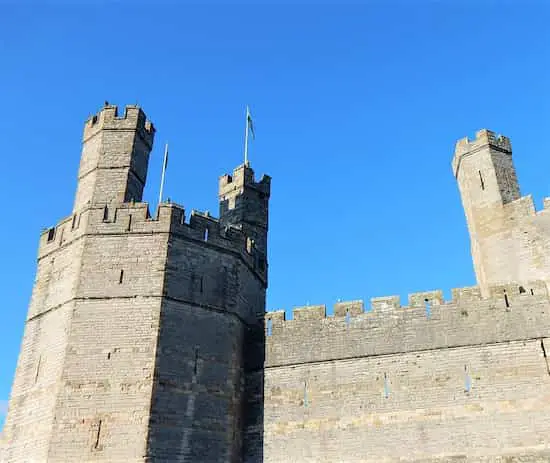 The political context.
The political context.
Another important role did acts of submission play. Very often wars were fought to win loyalty and subordination. The Emperor of a large territory couldn’t even dream of controlling his domains without loyal vassals. And so, often it was more important to gain trust and fidelity from the defeated than simply to cut their heads off. This could be done by oaths, humiliation, or acts of subordination. All this was from a political point of view, a very delicate matter… Kill everybody or treat them fairly?
- When Alexander the Great marched against the Achaemenid Empire, he easily conquered and gained subordination from all of the cities on the Mediterranean coast of what is today, Syria and Lebanon. He subsequently treated them fairly. When he came down to Tyre, that changed. The citizens put up resistance and Alexander had to siege the city for 6 months and build a causeway one kilometer straight out into the sea to be able to get close enough with his siege towers. That failed and thousands of his soldiers were killed. He sent for more warships from his allies further north, and finally, after six months he could enter Tyre. The King wasn’t happy… He immediately killed 6000 soldiers, and sent the remaining 30.000 men, women, and children to slavery, except for 2000 whom he crucified right there on the beach for everybody to witness.
But how much good virgin olive oil was there?
Oil wells existed in China, and the middle east already thousands of years ago, But it wasn’t until the 19th century, that commercial oil and petroleum became available to the general public. Vegetable and animal oils were used and still are, for cooking. But before 1800 non-mineral oils were used for much of what we use mineral oils for today, as well. From making soap to treating leather and wood. It was possibly even used for mechanical lubrification.
Interestingly it was essential for fire arrows and other thermal weapons. Remember that the best way to defend yourself against many of the Seige weapons was to put them on fire.
In some regions, vegetable oils were abundant, such as the Mediterranean region. But it still probably wasn’t abundant enough to be used in battle… Not even around the Mediterranean.
Was boiling oil used in sieges, even if there were perfectly valid alternatives?
And what were those alternatives?
Well, I would think the throwing was the main thing here. Throwing things at the enemy from the wall, or from a murder hole, was perfectly safe, and could range from being a nuisance to being a deadly threat.
There are many records of hot water being used. And quicklime, hot coal, and hot sand. The sand is interesting, as hot or cold, having sand inside a medieval iron armor wouldn’t be a very nice experience.
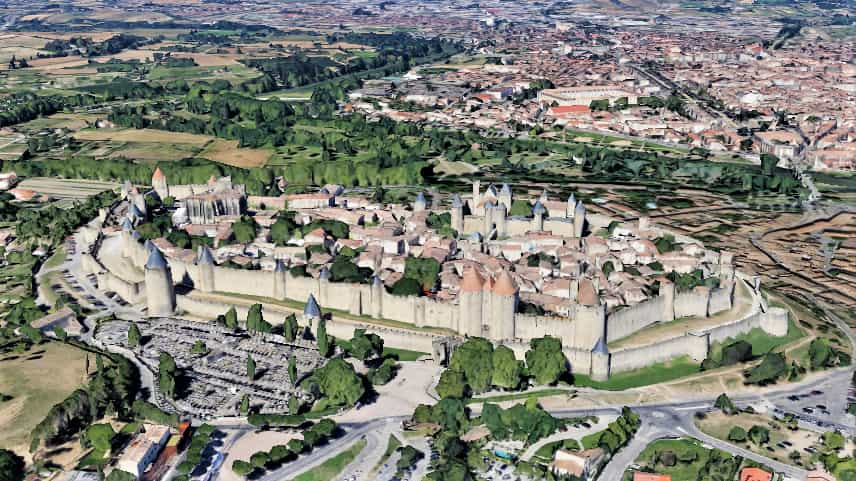
Other testimonies include dirt, rubble, rocks, tar, and even excrements from humans and animals, as well as urine. And of course, they could shoot. Arrows coming in from a murder hole at close range make a lot of damage.
- Carcassonne in southern France was besieged by Charlemagne in the 8th century. After six years of siege, the food inside the city was almost completely finished. The ruler, Lady Carcas, decided to feed the only remaining sack of wheat to the only remaining pig. Then she shot it over the wall with a catapult. When Charlemagne saw the well-fed hog on the ground, he concluded that the city was well-supplied and decided to lift the siege. A cute narrative. Unfortunately, it seems to be just a legend.
Final thoughts.
We don’t have any exact statistics of what was thrown on the enemy during the sieges of the past. Was boiling oil used in sieges? We know with reasonable confidence that it happened. Still, I would consider two very important facts:
- Oil was expensive and often there wasn’t much around.
- As it was the same oil they used for cooking, at least mostly so, Throwing away a resource that could prove essential if the siege would pursue, wouldn’t have been a smart move. Food and water were after all fundamental for resisting inside the castle.
Was boiling oil used in sieges… ever?
These are some of the sieges where we know with reasonable confidence that burning oil was used by the defenders:
- The siege of Yodfat (Israel) in 67 AD.
- The siege of Orléans (France) from 1428 to 1429.
- The Great Siege of Malta in 1565.
- The Siege of Sommières (France) in 1573.
… and probably many more that we just don’t know about…
Conclusion.
Well, we know it happened, but it probably wasn’t very common. Oil was too precious to just be thrown away.
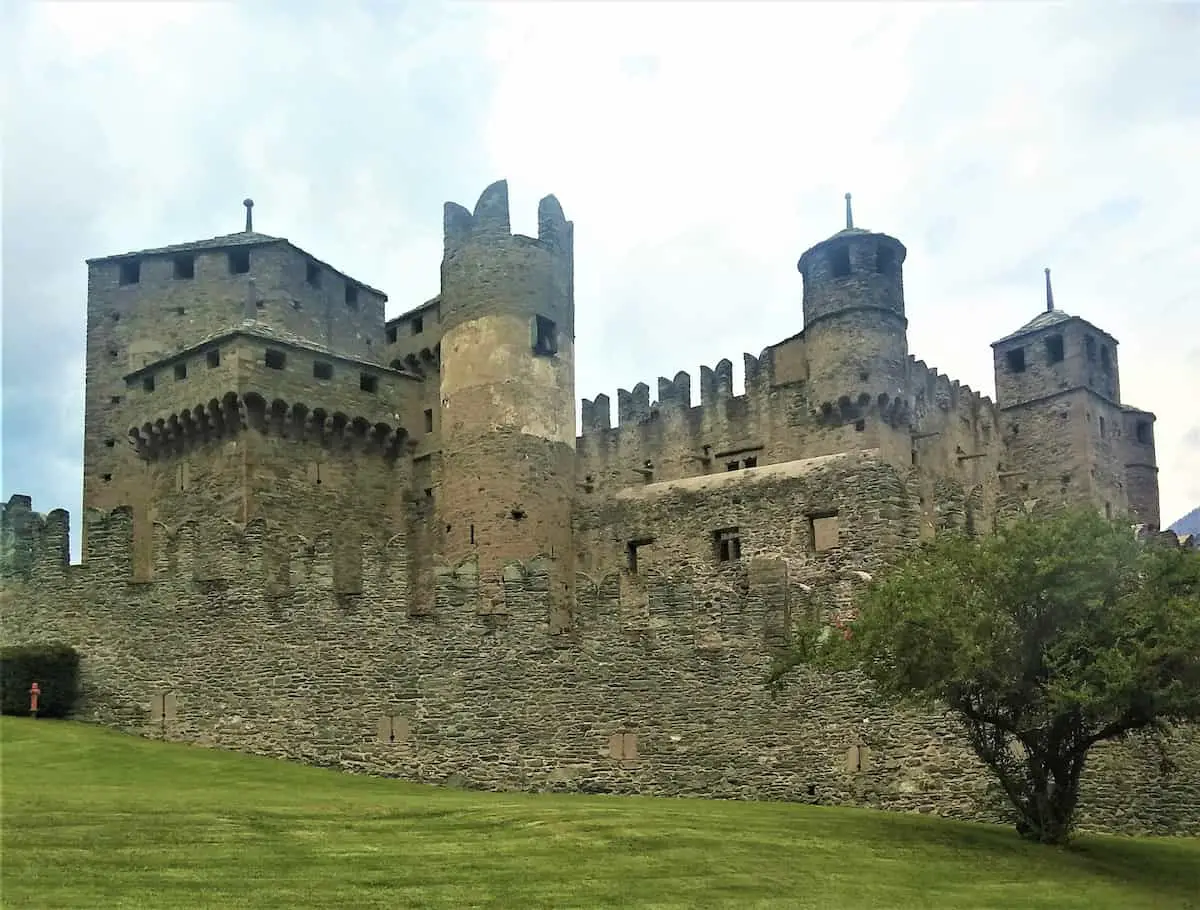
sources